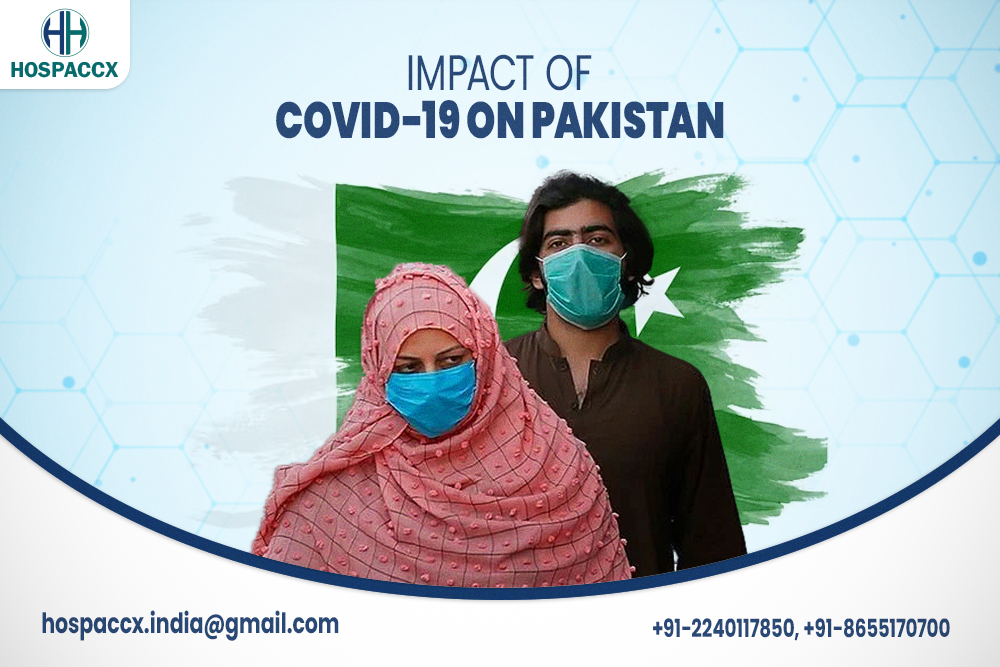Impact of Covid in Pakistan
The world was confronted with the COVID-19 pandemic in the first quarter of 2020, which was a true ‘black swan’ event – an event whose probability occurrence is uncommon, but if it occurs, it can have disastrous implications. Global financial markets plummeted, factories were halted, global commerce and supply lines were severely disrupted, airports were empty, offices ceased operations, and stores stayed closed in order to prevent the pandemic outbreak.
The first case of COVID-19 in Pakistan was reported on 26th February 2020; a student in Karachi tested positive after returning from Iran. Despite being the world’s fifth-most populous country, Pakistan has only had the 29th-highest death toll (about 30,369) and the 29th-highest number of confirmed cases (at approximately 1,527,956). However, these estimates do not account for the country’s undercounting of COVID-19 infections.
So far, Pakistan has been hit by three waves of COVID-19. The first wave of COVID-19 in the country began in late May 2020, peaked in mid-June with high daily new confirmed case counts and daily new death numbers, and stopped in mid-July. However, cases and deaths began to rise again in early November 2020, culminating in the country’s second wave. This wave mostly affected the southern province of Sindh, and peaked around mid-December 2020. The country’s third wave began in mid-March 2021, when testing positive rates, as well as the number of daily confirmed cases and deaths, began to soar. The third wave primarily impacted Punjab and Khyber Pakhtunkhwa. This wave peaked in late April 2021, and since then, positive rates, daily new case numbers, and daily new death numbers are all decreasing.
Impact of COVID-19 in Pakistan
Impact on Healthcare
In comparison to affluent countries, Pakistan’s healthcare system is in disarray. Facilities are insufficient to suit the demands of the people. On average, one hospital bed is provided for every 1,680 people. The daily testing was initially relatively low, but as the infection incidence climbed, testing improved.
Disruption in treatment of Non-COVID Diseases
One of the significant issues during the first and second waves of the pandemic was the provision of healthcare for non-COVID-related diseases, which included primary healthcare services such as regular vaccination and mother and child healthcare. The country-wide lockdown and travel restrictions interrupted supply chains, resulting in stock shortages of vital vaccinations and a disruption of immunisation services, potentially affecting child immunisation.
Neglected Care to Women and Child Health
The COVID-19 pandemic had a significant impact on reproductive healthcare and new-born care on several levels, including: i) potential shortages of required medications (such as antiretrovirals and antibiotics) due to disrupted supply; ii) health care providers diverted to help address COVID-19 patients; and iii) financial resources diverted to COVID-19 response. The illness’s outbreak imposed an additional strain on women in terms of domestic duties and disease control. Women’s role in illness prevention and care goes beyond the confines of the home. Furthermore, the vast majority of healthcare professionals (nurses, physicians, etc.) are female. In such circumstances, these healthcare workers are responsible for both domestic labour and homecare.
Covid-19 Vaccination
Of the total eligible population 46 % is fully vaccinated and 63 % has received at least one dose. Amongst the administrative units, Islamabad leads with 77 % fully vaccinated. Punjab is at 51 %, Gilgit-Baltistan 46 %, Azad Jammu and Kashmir45 %, Balochistan 42 %, Khyber Pakhtunkhwa 41%, and Sindh at 37 %.
Impact on Education
The pandemic’s consequences have highlighted a number of issues for Pakistan’s education sector, including significant gaps and inequities in access and quality of education. The pandemic has directly impacted 42 million school going children from pre-primary and primary to higher secondary and degree college levels.
Risk of School Closures
Low-cost private schools are unable to pay salaries to the teachers and face risk of school closures. This situation stands to potentially exacerbate risks and vulnerabilities to an already weak education system, as well as steepen learning capabilities.
Barriers to Education
Mobility constraints, non-availability of internet, non-access to tele-schooling facilities has a disproportionate adverse impact on the most vulnerable groups, particularly females and other marginalised groups and those in rural areas and urban slums.
There are specific challenges for households as well as schools in gaining access to online and other media platforms for distance education delivery (as the only way to deliver learning due to movement restrictions). These challenges include a lack of capacity among teachers who have not been trained to deliver remote and digital education and may also lack the necessary infrastructure.
Risk of Student Drop-Outs
Geographically, rural areas and urban slums are potentially at highest risk with more than 70 per cent of current enrolment and large pockets of already out of school children. Hence, the COVID-19 crisis may widen the already existing socioeconomic gap in the educational system and impact the overall literacy rate of the country.
Economic and Social Impact
On 2 April, the Government of Pakistan announced that the Pakistani economy was estimated to lose Rs 2.5 trillion due to the coronavirus pandemic. In the initial days of lockdown in March 2020, the Pakistan stock market lost on an average 1500 points daily. The losses in the stock market were mainly attributed to the increase in interest rate first, reduction in oil price second and the onset of coronavirus. Billions of rupees invested in different shares were reduced by one third and in some cases half of the value.
Overall economic growth in Pakistan contracted to (-) 0.47% in 2019-20 when it already had weak economic growth of just 1.9 percent in the prior year. The COVID-19 further compounded long-standing challenges, especially in the industrial and services sector. However, due to the timely intervention of the government (economic stimulus package), the economy turned back to a revival path.
Impact on Trade
Manufacturing sector, especially the exporters, faced difficulties due to the decline in the demand for imports from Pakistan and other developing countries. Numerous consignments of the textile sector were stranded on the sea and then returned because, in wake of the pandemic, no state wanted to bring them inside the country unless everything was back to normal. Exporters also faced problems in working capital management. Additionally, as supply networks dried up and they were left without products or necessary supplies, small firms, particularly independent contractors, Impact of COVID-19 on Socioeconomic Situation of Pakistan struggled.
Impact on Employment
Some government programs were maintained through the crisis to keep people employed. For example, the Plant for Pakistan reforestation program was maintained through the pandemic employing 60,000 people. However, on 5 June, the Pakistani Government announced plans to privatise a number of state-run industries, including the state-run Pakistan Steel Mills. Such actions led to the lay off and subsequent unemployment of over 9300 employees.
SMEDA (Small and Medium Enterprises Development Authority, Pakistan) estimates shows that 3.25 million Micro, Small and Medium Enterprises (MSMEs) constitute nearly 90% of all the enterprises in Pakistan and their share in the annual GDP is 40%, approximately. Since most MSMEs are not documented (other than those workers registered under EOBI or a social security program), they are not protected against loss of employment.
As of July 2021, about 20.7 million workers in Pakistan were jobless due to COVID-19 lockdowns and other restrictions.
Administrative Response and Establishment of the NCOC
The National Command and Operation Center (NCOC) was set up at the early stages of pandemic and is mandated for reviewing situations continuously and taking day to day important decisions. NCOC is the nerve centre to synergize and articulate unified national effort against COVID-19.
Stimulus Package
During the initial days of the COVID-19 pandemic, after analysing the initial status and possible repercussions at the NCOC, the Government came up with a Rs 1.24 trillion stimulus package. Besides this stimulus package several other policy measures were taken to reduce the incidence and deaths due to COVID-19 and towards salvaging the economy.
The federal government’s economic relief package also benefited the healthcare professionals in the country. It was decided that if a doctor or a paramedic died while treating coronavirus patients, they would be considered martyrs and their families would receive the package that is given to martyrs.
Economic Recovery
The lockdown, from March 2020 to May 2020 and a few months after, led to decline in economic activity in the last quarter of 2019-20 for numerous businesses. The drop-in activities were so severe that normal expected GDP growth had declined from 3.3 percent to negative 0.47 percent, which was partly cushioned by the introduction of the construction sector package in June 2020.
However, the economy of Pakistan rebounded strongly in FY2021 and posted growth of 3.94 percent which is not only substantially higher than the previous two years (-0.47 and 2.08 percent in FY2020 and FY2019 respectively) but also surpassed the target (2.1 percent for FY2021). Despite strict fiscal constraints, timely and appropriate policy measures taken by the government resulted in a V-Shaped economic recovery.
Conclusion
At the start of the COVID-19 epidemic, the Pakistani government acted quickly to address and minimise its potential damage. The government and other interested parties have created a huge number of policy papers on how to respond to the epidemic. The World Health Organisation has commended Pakistan for its efforts to reduce the incidence of illnesses. The first case was announced on March 18, 2020, and the first strategy meeting was convened on March 26, 2020. The National Disaster Risk Management Fund provided funding, and the government issued its National Response and Resilience Plan – a framework for pandemic plans and responses – in May 2020.
Despite all that, one of the problems has been and continues to be ensuring coordinated implementation of best practice and advice throughout one of the world’s largest education systems. With limited healthcare capacity and health systems already under pressure prior to COVID-19, Pakistan is managing a challenging healthcare landscape, which COVID-19 now compounds. The outbreak of COVID-19 has created new challenges for the protection of the health and safety of its citizens along with a new post-pandemic culture. For more information about the Country and Healthcare opportunities in Pakistan, you can visit the company website on www.hospaccxconsulting.com or contact us directly.
Related Team Members










